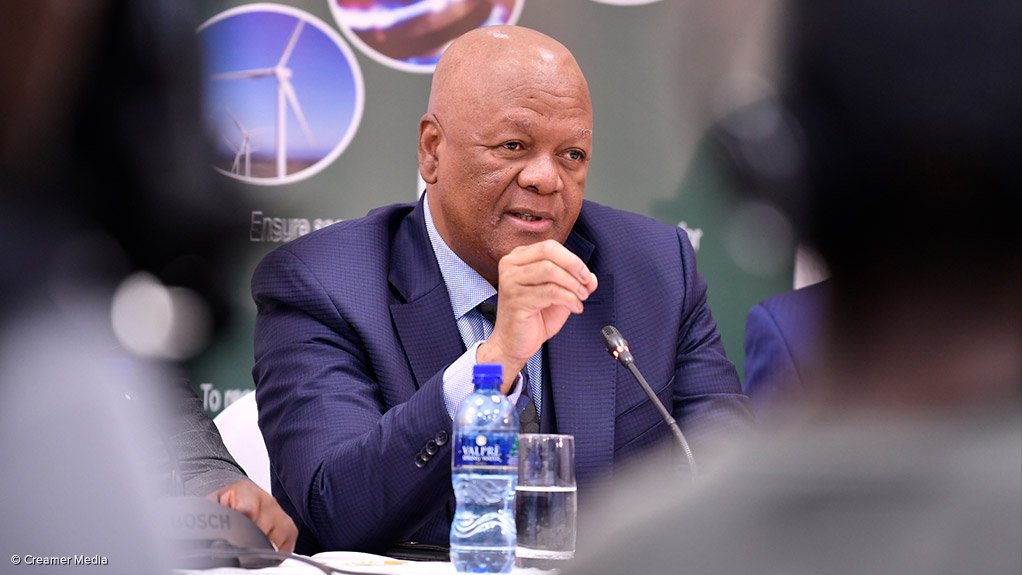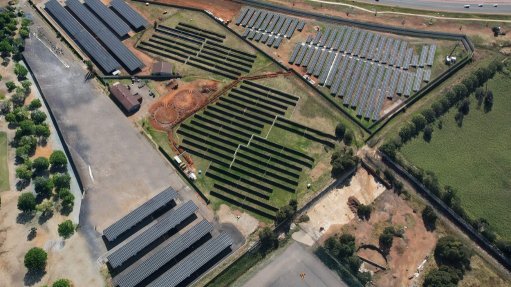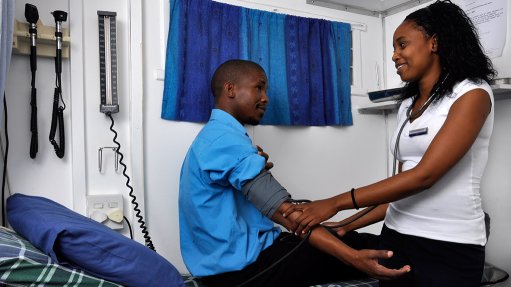Radebe sees energy contributing $25bn to South Africa’s $100bn investment target
Energy Minister Jeff Radebe says one-quarter, or $25-billion, of South Africa's newly announced five-year investment target of $100-billion could be met through investments in new energy projects, including a possible new greenfield crude oil refinery and a gas pipeline linking South Africa to the Rovuma basin, in northern Mozambique.
He stressed that government foresaw gas-related investments, including domestic shale-gas projects, contributing materially to the investment target, along with further renewable-energy and conventional power projects.
The R56-billion-worth of investments arising from the recent signing of 27 renewable-energy independent power producer (IPP) projects would kick start the energy sector’s contribution to meeting the investment target set by President Cyril Ramaphosa in April. Since 2011, South Africa’s renewable-energy procurement programme had facilitated $10.8-billion worth of IPP investments into South Africa.
The role, if any, that nuclear energy could play in the investment roll-out would be determined by the electricity generation mix decided in the impeding update to the Integrated Resource Plan (IRP), which would be delivered for Cabinet approval in mid-August.
Radebe stressed, though, that government was keen to consolidate the leading global position of South African Nuclear Energy Corporation (Necsa) subsidiary NTP Radioisotopes in the production of medical isotopes.
NTP Radioisotopes is one of only five sites in the world capable of producing Molybdenum-99 (Mo-99) in commercial quantities and it manufactures between 25% and 33% of global output using the Safari-1 research reactor. Necsa is currently investigating the possibility of investing in a second reactor, dubbed the Commercial Production Reactor programme, at Pelindaba, north of Pretoria.
Radebe said the goal of the energy sector contributing one-quarter of the $100-billion investment target could also include:
Securing strategic stocks through investment in new fuels tanks and in infrastructure required for South Africa to become a major shale gas producer.
Promoting natural gas by designing and building infrastructure required to transport natural gas and liquefied natural gas.
Driving towards cleaner fuels by improving the country’s refinery assets to meet world-class emissions standards.
And supporting the transition towards electrification of transport, through key strategic partnerships.
Radebe indicated that greater clarity on government’s approach to liquid fuels and gas would be provided in master plans, which would be published after further consultation with the oil and gas and energy stakeholders.
S&P Global Platts global director of analytics Chris Midgley expressed caution at South Africa’s plan to invest in a new refinery, warning that, while refining margins were currently high, it was unclear whether South Africa could absorb a refinery of the scale necessary to make it competitive.
“Refineries, today, need to be large in size and they need to be integrated with chemicals,” he explained. The implication was that South Africa could end up producing “too much fuel in one place”, which would increase the logistics costs associated with distributing the fuel to where it could be consumed.
“South Africa is not the same as China, the Middle East, or India where you can build one-million-barrel-a-day refineries. With the stronger margins, which are likely to remain firm to 2020, this may be the time for South Africa to be reinvesting in its existing refineries to produce cleaner product,” Midgley said in an interview with Engineering News Online.
Radebe promised that there would be prior consultations with stakeholders, including the oil majors, before any decisions were made.
He also reaffirmed that there would be further consultations on the IRP for electricity ahead of its publication in the Government Gazette later this year.
The master plans, which would take into account prospects for greater electrification of transport, would be finalised by year-end and would clarify whether South Africa would pursue the development of a new greenfield crude oil refinery, as well as the role that South Africa’s existing refinery fleet could play in the production of cleaner fuels.
CEF RESTRUCTURING
In parallel, work was under way to finalise a turnaround strategy for the Central Energy Fund (CEF) group of companies, including PetroSA, which is in severe financial distress. The strategy was being finalised with the support of the Boston Consulting Group and Radebe said an announcement regarding CEF’s future structure, mandate and leadership was imminent.
Meetings would also be conducted with the government of Mozambique in May to assess prospects for further gas cooperation, beyond the imports that currently flow from the Pande and Temane gasfields to Secunda, in Mpumalanga, through the 865-km pipeline operated by the Republic of Mozambique Pipeline Investments Company.
“The gas finds in the Rovuma basin in Mozambique provide an opportunity for that country, South Africa and the Southern African Development Community to benefit from such resources. We are firmly of the view that, together with our Mozambican counterpart, we need to develop an infrastructure programme, which will allow the gas to be beneficiated through projects such as a gas-to-liquids plant and other petrochemical facilities in Mozambique, as well as a pipeline from Rovuma to the south of Mozambique, which, in our view, would enable construction of gas-to-power projects in both countries.”
SHALE GAS BACK ON THE RADAR
Radebe also planned to work with Mineral Resources Minister Gwede Mantashe to accelerate the development of South Africa’s domestic shale-gas resources.
Delivering his Budget Vote address this week, Mantashe announced that government intended “to move with speed to fast-track the finalisation of exploration rights applications so that South Africa can maximise its chances of reaping the benefits from shale gas exploration and exploitation”.
Mantashe said a notice would be published soon inviting comments from persons who might be “materially and adversely affected” by government’s decision regarding three shale-gas applications.
There was still significant resistance to South Africa pursuing the exploitation of its shale resources, which are located primarily in the water stressed Karoo region.
However, Radebe said that there was “no doubt in [government’s] mind that we will be proceeding”.
Article Enquiry
Email Article
Save Article
Feedback
To advertise email advertising@creamermedia.co.za or click here
Comments
Announcements
What's On
Subscribe to improve your user experience...
Option 1 (equivalent of R125 a month):
Receive a weekly copy of Creamer Media's Engineering News & Mining Weekly magazine
(print copy for those in South Africa and e-magazine for those outside of South Africa)
Receive daily email newsletters
Access to full search results
Access archive of magazine back copies
Access to Projects in Progress
Access to ONE Research Report of your choice in PDF format
Option 2 (equivalent of R375 a month):
All benefits from Option 1
PLUS
Access to Creamer Media's Research Channel Africa for ALL Research Reports, in PDF format, on various industrial and mining sectors
including Electricity; Water; Energy Transition; Hydrogen; Roads, Rail and Ports; Coal; Gold; Platinum; Battery Metals; etc.
Already a subscriber?
Forgotten your password?
Receive weekly copy of Creamer Media's Engineering News & Mining Weekly magazine (print copy for those in South Africa and e-magazine for those outside of South Africa)
➕
Recieve daily email newsletters
➕
Access to full search results
➕
Access archive of magazine back copies
➕
Access to Projects in Progress
➕
Access to ONE Research Report of your choice in PDF format
RESEARCH CHANNEL AFRICA
R4500 (equivalent of R375 a month)
SUBSCRIBEAll benefits from Option 1
➕
Access to Creamer Media's Research Channel Africa for ALL Research Reports on various industrial and mining sectors, in PDF format, including on:
Electricity
➕
Water
➕
Energy Transition
➕
Hydrogen
➕
Roads, Rail and Ports
➕
Coal
➕
Gold
➕
Platinum
➕
Battery Metals
➕
etc.
Receive all benefits from Option 1 or Option 2 delivered to numerous people at your company
➕
Multiple User names and Passwords for simultaneous log-ins
➕
Intranet integration access to all in your organisation





















